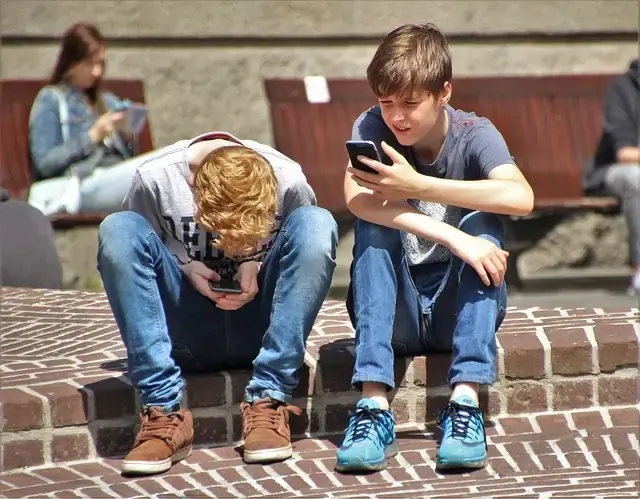The penetration rate of mobile phones continues to rise globally and almost everyone of all ages owns mobile phones. Although mobile phones bring convenience, when used by kids, the situation is not that simple. For this reason, experts and regulators have been paying attention to children’s physical and mental health and study concentration. Recently, the British government joined the ranks of mobile phone control nations. It has now issued a guidance to restrict students’ use of mobile phones during school.

Before now, European countries such as France and Italy had taken the lead in implementing regulations banning the use of mobile phones in classrooms. Some schools in the UK have already formulated relevant school regulations. The new guidance issued by the government aims to achieve a comprehensive promotion and unification.
Gillian Keegan, the UK education secretary, said the move was designed to
“achieve clarity and consistency of practice, support principals and leaders, and increase teachers’ confidence to take action.” She further emphasized, “Today’s Children live in an increasingly complex world, and their lives are closely connected online and offline. This brings many exciting opportunities, but also challenges. By limiting mobile phone use, schools can create a quiet environment that prevents students from Distraction so that all students can get the education they deserve.”
British government wants schools to have their policies too
The UK government encourages schools to develop their policies and offers several overarching options to choose from. The guidance released by the British government offers the following options

- The first and most stringent option is to completely ban cell phones from campus. However, the guidance also acknowledges that doing so may cause inconvenience or risks for students travelling to and from school.
- The second option is to uniformly collect mobile phones when students arrive at school. This will prevent mobile phones from interfering with learning. It will also ensure that students have mobile phones on their way to and from school.
- Also, schools may choose to have students store cell phones in lockers or other personal storage spaces. While students still have their phones, they don’t have access to them throughout the day, even during recess.
- The last option is consistent with what many schools do, which allows students to keep their phones in their bags. However, the phones must be turned off and not used.
The guidance also recommends that schools educate students on the potential hazards of mobile phones. Multiple studies have shown that social media can hurt the mental health of young people in particular. The British government believes that in addition to tackling social media issues, limiting mobile phone use can improve students’ concentration, and increase time for extracurricular activities and face-to-face communication with peers.
For parents who need to contact their children, the guidance advises that they contact the school directly rather than via a personal mobile phone. At the same time, the government also encourages parents to discuss relevant school regulations at home and once again emphasizes the potential risks of mobile phones and the Internet.

Conclusion
In conclusion, the British government’s recent issuance of guidance to restrict students’ use of mobile phones during school reflects a growing global concern for children’s physical and mental well-being, as well as their academic focus. By providing options for schools to develop their policies, the government aims to create a conducive learning environment that minimizes distractions and maximizes educational opportunities. Emphasizing the need for clarity and consistency, the guidance underscores the importance of addressing the potential hazards of excessive mobile phone use, while also promoting face-to-face communication and extracurricular engagement among students. Ultimately, this initiative highlights the collaborative effort among educators, regulators, and parents to prioritize the holistic development and safety of children in an increasingly digital world.





